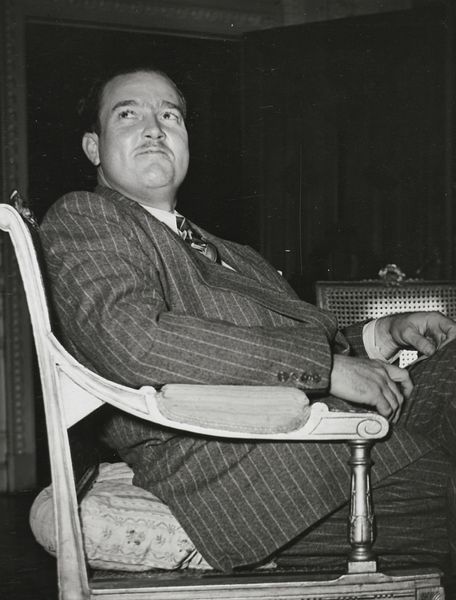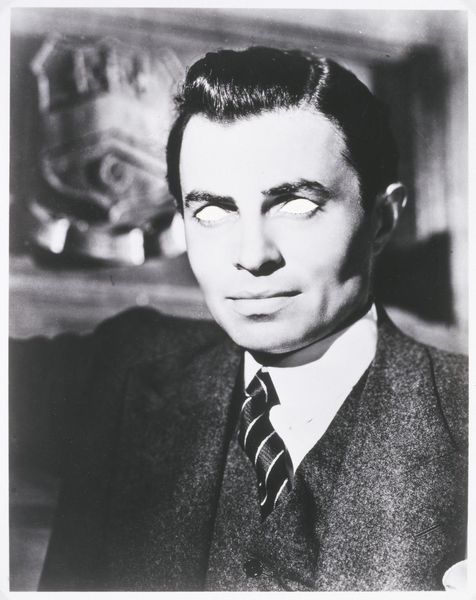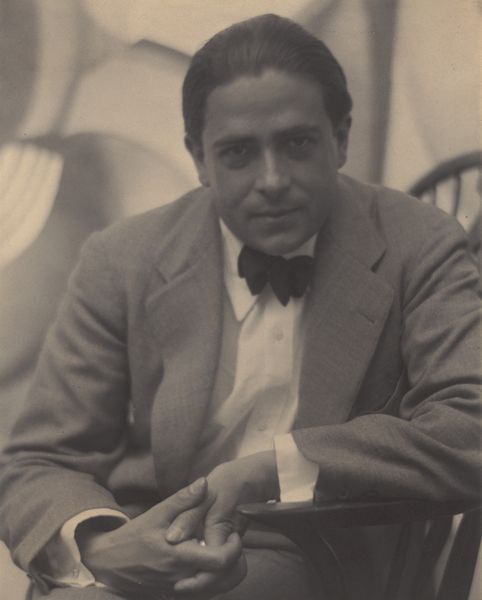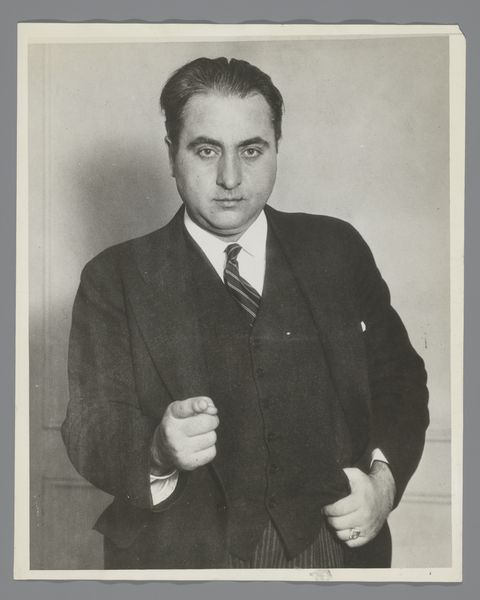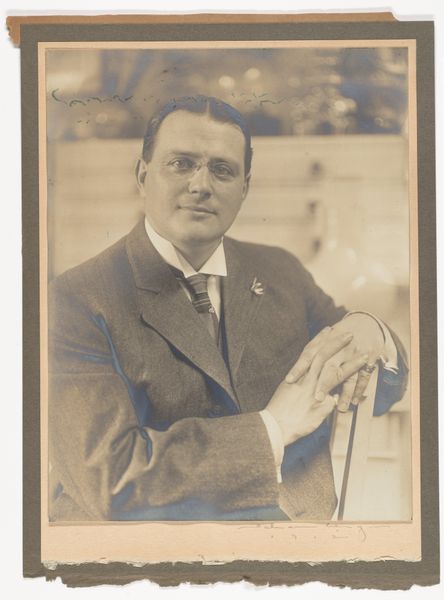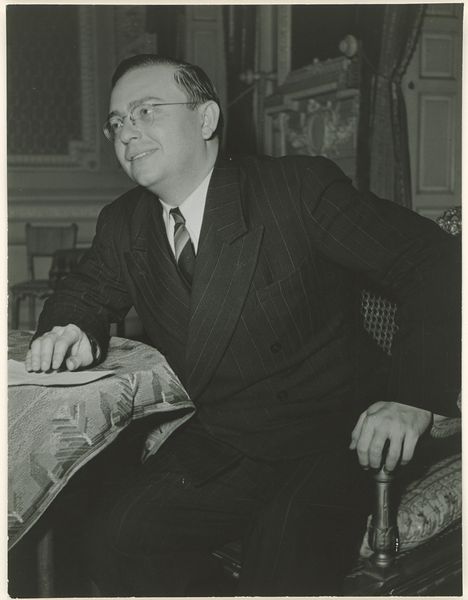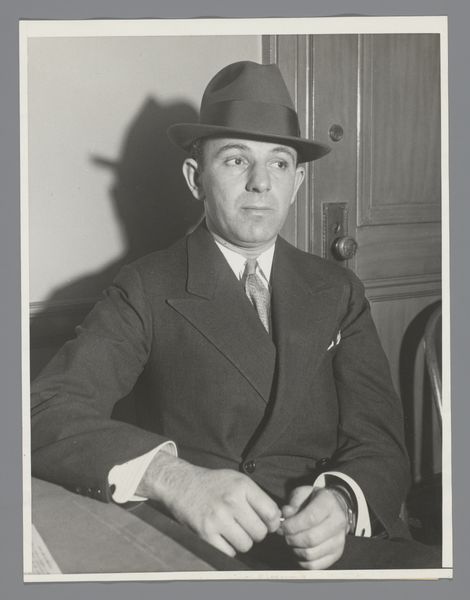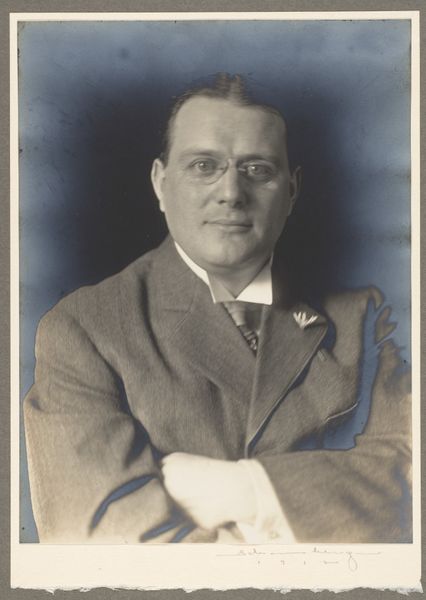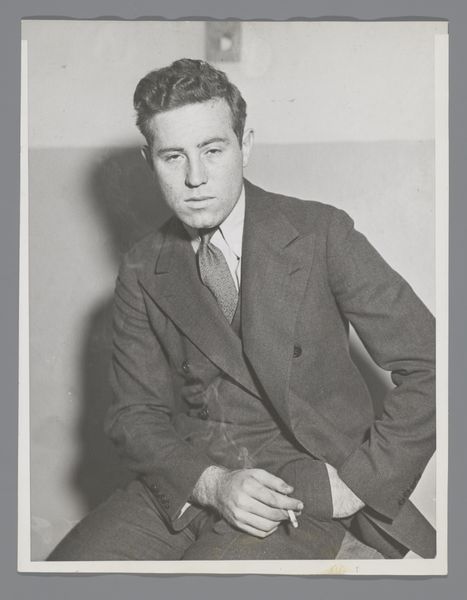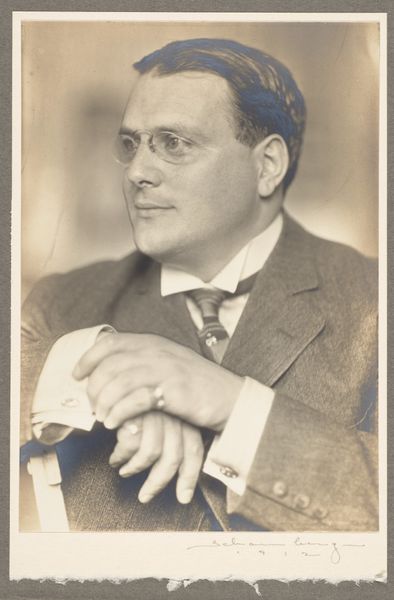
photography
#
portrait
#
photography
#
historical photography
#
geometric
#
modernism
#
portrait photography
Dimensions: height 225 mm, width 170 mm
Copyright: Rijks Museum: Open Domain
Curator: Let's take a look at this fascinating photographic print. It's titled "Portret acteur, zittend," or "Portrait of an Actor, Seated" and it was taken sometime between 1925 and 1935 by A. Binder. Editor: My first impression is of subtle tension. The tightly clasped hands, the averted gaze. There's an intensity captured here, a weight conveyed by the photographic paper itself, you know? Curator: It's interesting you mention tension, as the 1920s and 30s were rife with social and political anxieties. The artist would likely have been highly aware of and shaped by this volatile pre-war period. Editor: Precisely. And you can see that in the materials. The photographic paper itself wouldn't have been cheap during those years, indicating a degree of deliberate craft, even luxury, in its making. Do we know how many prints exist? Each adds labor and material value to consider. Curator: Archival records aren't very revealing on this topic unfortunately, though Binder operated within established studio practices, crafting promotional photographs that could augment or even dictate the reception of his clients' public image. Editor: Image, yes. But that suit—sharp pinstripes!—and that slightly unsettling geometric arrangement between figure and ground are also critical elements in defining how audiences might perceive him. And how the fabric drapes…that says so much about the tailoring involved. Curator: This was a deliberate performance of modernism. Photography offered a democratic way for even those outside the traditional elite to craft an aspirational identity and this type of carefully curated photograph fed a growing culture of celebrity. Editor: It speaks to broader social changes, sure. The material is as much the message. A print like this was a commodity, an object made and circulated to bolster this actor's career, its value measurable in material terms. Curator: So, for you, the material quality reflects its immediate cultural function within that framework. The image served a practical, professional purpose that ultimately transcends that one person. Editor: Yes, but the image and the materiality of the photographic print together. It's the craft and design speaking as much as the likeness of the subject, and it's always circulating back into its broader role and cultural framework that must concern the people actually creating and viewing it. Curator: That materialist perspective allows a more tangible connection to the everyday workings of fame in the early 20th century. Editor: And yours, as always, makes us consider the larger historical narratives at play in its consumption and artistic style.
Comments
No comments
Be the first to comment and join the conversation on the ultimate creative platform.
